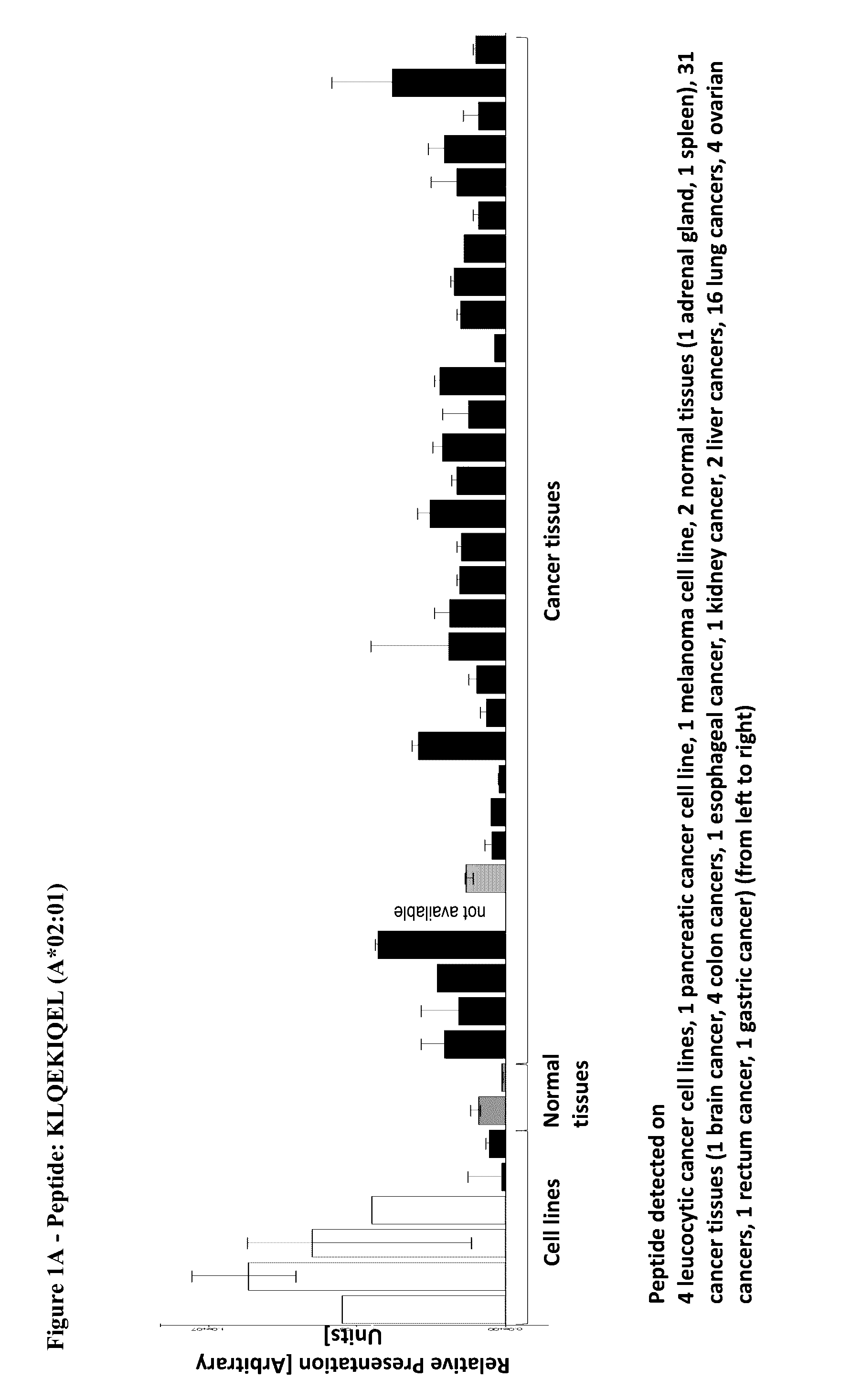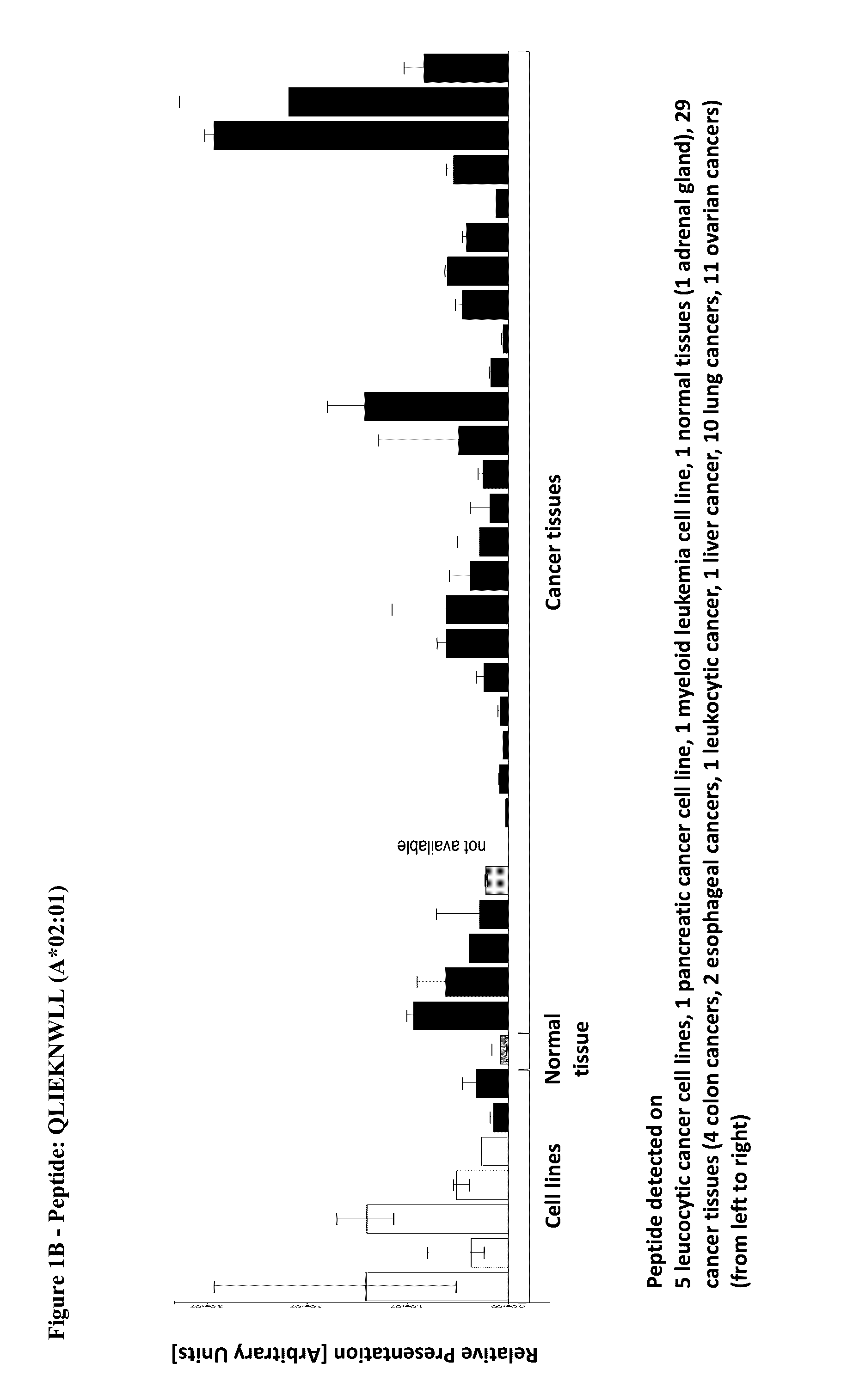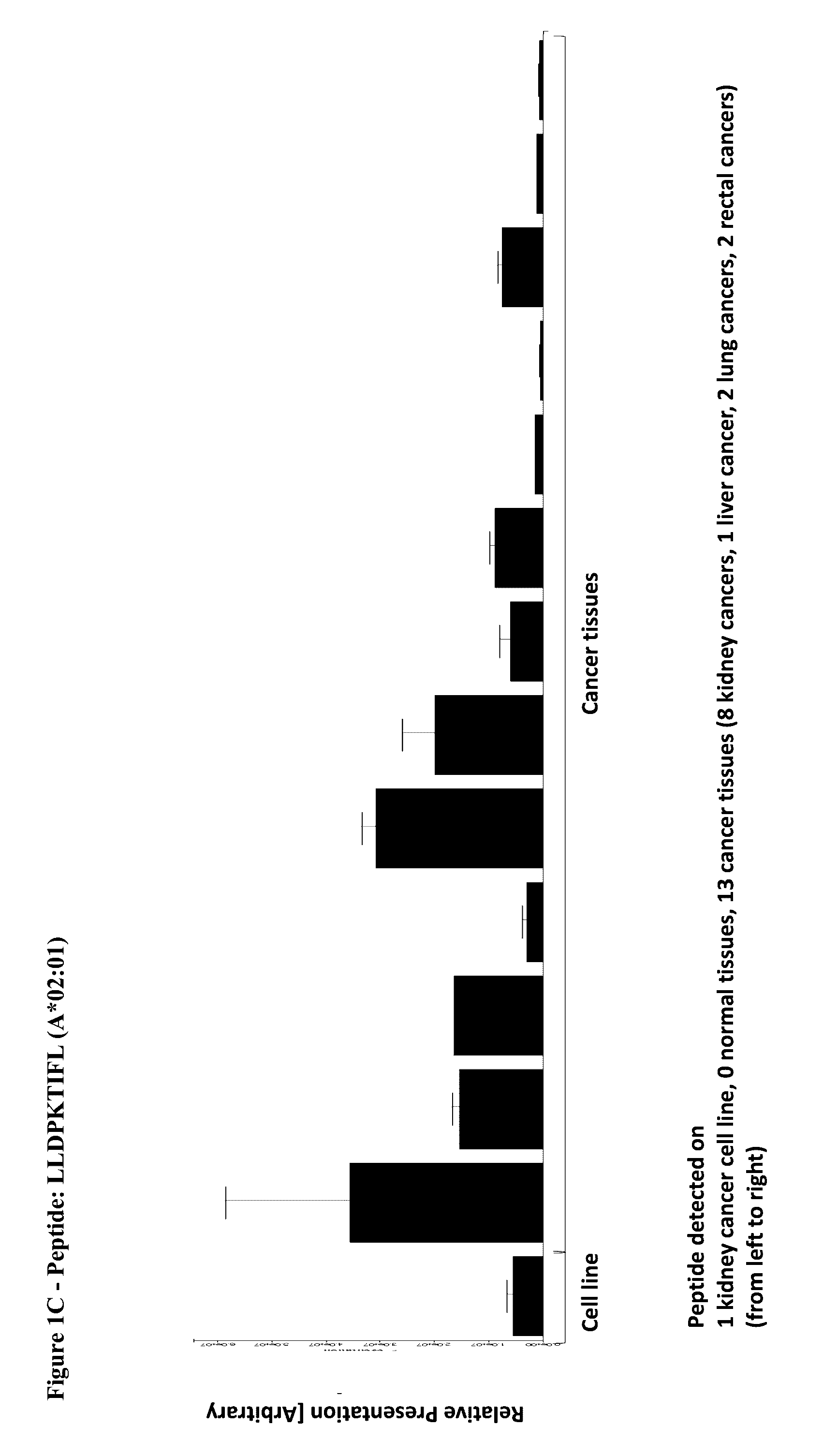Novel peptides and combination of peptides for use in immunotherapy against various tumors
- Summary
- Abstract
- Description
- Claims
- Application Information
AI Technical Summary
Benefits of technology
Problems solved by technology
Method used
Image
Examples
Example
Example 1
Identification and Quantitation of Tumor Associated Peptides Presented on the Cell Surface
Tissue Samples
[0391]Patients' tumor tissues were obtained from Asterand (Detroit, USA and Royston, Herts, UK); Val d'Hebron University Hospital (Barcelona); BioServe (Beltsville, Md., USA); Center for cancer immune therapy (CCIT), Herlev Hospital (Herlev); Geneticist Inc. (Glendale, Calif., USA); University Hospital of Geneva; University Hospital of Heidelberg; University Hospital of Munich; Kyoto Prefectural University of Medicine (KPUM); Osaka City University (OCU); ProteoGenex Inc., (Culver City, Calif., USA); University Hospital of Tübingen. Normal tissues were obtained from Bio-Options Inc., CA, USA; BioServe, Beltsville, Md., USA; Capital BioScience Inc., Rockville, Md., USA; Geneticist Inc., Glendale, Calif., USA; University Hospital of Geneva; University Hospital of Heidelberg; University Hospital Munich; ProteoGenex Inc., Culver City, Calif., USA; University Hospital of Tübing...
Example
Example 2
Expression Profiling of Genes Encodinq the Peptides of the Invention
[0395]Over-presentation or specific presentation of a peptide on tumor cells compared to normal cells is sufficient for its usefulness in immunotherapy, and some peptides are tumor-specific despite their source protein occurring also in normal tissues. Still, mRNA expression profiling adds an additional level of safety in selection of peptide targets for immunotherapies. Especially for therapeutic options with high safety risks, such as affinity-matured TCRs, the ideal target peptide will be derived from a protein that is unique to the tumor and not found on normal tissues. For this invention, normal tissue expression of all source genes was shown to be minimal based on the above-described database of RNA expression data covering about 3000 normal tissue samples. Further RNA analyses of normal and tumor tissues were added in case of some cancer entities (HCC, CRC, GB, GC, NSCLC, PC, RCC, BPH / PCA) to estimat...
Example
Example 3
In Vitro Immunogenicity of MHC Class I Presented Peptides
[0404]In order to obtain information regarding the immunogenicity of the TUMAPs of the present invention, the inventors performed investigations using an in vitro T-cell priming assay based on repeated stimulations of CD8+ T cells with artificial antigen presenting cells (aAPCs) loaded with peptide / MHC complexes and anti-CD28 antibody. This way the inventors could show immunogenicity for 47 HLA-A*0201 restricted TUMAPs of the invention so far, demonstrating that these peptides are T-cell epitopes against which CD8+ precursor T cells exist in humans (Table 6A and B).
In Vitro Priminq of CD8+ T Cells
[0405]In order to perform in vitro stimulations by artificial antigen presenting cells loaded with peptide-MHC complex (pMHC) and anti-CD28 antibody, the inventors first isolated CD8+ T cells from fresh HLA-A*02 leukapheresis products via positive selection using CD8 microbeads (Miltenyi Biotec, Bergisch-Gladbach, Germany) of...
PUM
| Property | Measurement | Unit |
|---|---|---|
| Fraction | aaaaa | aaaaa |
| Fraction | aaaaa | aaaaa |
| Volume | aaaaa | aaaaa |
Abstract
Description
Claims
Application Information
 Login to View More
Login to View More - R&D
- Intellectual Property
- Life Sciences
- Materials
- Tech Scout
- Unparalleled Data Quality
- Higher Quality Content
- 60% Fewer Hallucinations
Browse by: Latest US Patents, China's latest patents, Technical Efficacy Thesaurus, Application Domain, Technology Topic, Popular Technical Reports.
© 2025 PatSnap. All rights reserved.Legal|Privacy policy|Modern Slavery Act Transparency Statement|Sitemap|About US| Contact US: help@patsnap.com



